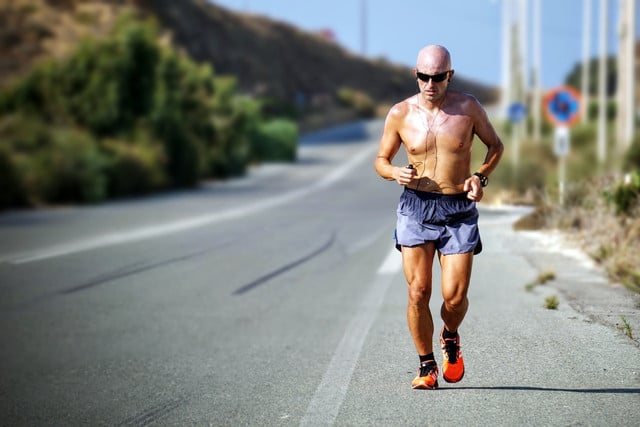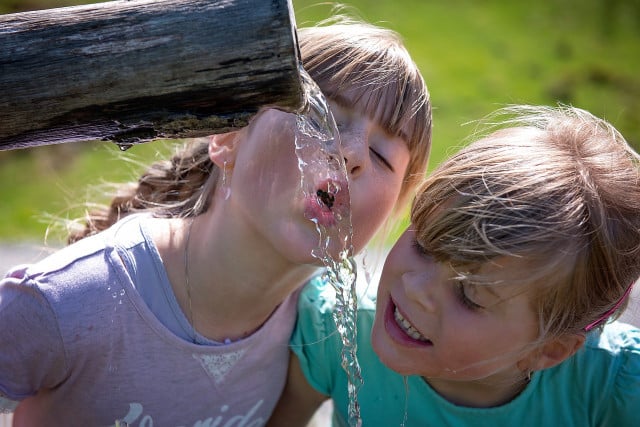
If left untreated, heat stroke can be very dangerous and can even lead to death. That’s why it’s important to recognize the symptoms and act correctly at the first signs.
Heat stroke, also known as heat exhaustion, occurs when the body is exposed to high heat for too long or is subjected to excessive stress at high temperatures. The organism then tries to regulate the body temperature by producing more sweat. If it is no longer able to do this, the body temperature can rise to up to 40 degrees Celsius.
When it’s warm, our blood vessels expand so that as much overheated blood as possible is transported to the skin, where the heat can be released through sweating. That’s why we have to drink so much on hot days. As the sweat evaporates from our skin, the skin is cooled – and with it the blood. It can then cool down and migrate to other parts of our body.
However, this system fails in the case of heat stroke. “The blood then clots. The small clots block the small vessels,” explains Frank Erbguth, President of the German Brain Foundation, to the dpa. The kidneys, as well as the liver and heart, can no longer function properly.
Heat stroke is usually accompanied by dizziness, nausea and often unconsciousness.
By the way: A distinction is made between classic heat stroke and exertional heat stroke. Classic heat stroke is more likely to affect children, older people and sick people, as their heat regulation is not yet or no longer working properly. Exertionary heat stroke, on the other hand, can also affect young people, as it is mainly associated with excessive stress in high temperatures.
Heat stroke: The symptoms

(Photo: CC0 / Pixabay / Pexels)
Heat stroke is one of the so-called heat injuries. However, it differs significantly from other illnesses, such as the symptoms of sunstroke or heat exhaustion. You can recognize heat stroke by the following symptoms:
- high body temperature up to 40 degrees Celsius
- accelerated pulse
-
Dizziness, headache and nausea
- lack of sweat production
- hot, dry and reddened skin
- Dizziness
If heat stroke is not noticed and counteracted in time, it can also lead to
- a drop in blood pressure,
- Circulatory collapse and associated shock
- and unconsciousness.
Due to the collapse of the entire cardiovascular system, the organs are no longer supplied with sufficient blood and oxygen, which can lead to death without medical treatment.
Therefore, it is important: If the symptoms indicate heat stroke, it is essential to consult or call a doctor.
First aid for heat stroke
If heat stroke is suspected, immediate action must be taken. First and foremost, the affected person must be cooled. These are the correct first aid measures:
- Take the affected person out of direct sunlight. It doesn’t matter whether you take the person into a building or just into the shade of a tree. What’s important is that they are no longer exposed to direct sunlight.
- Try to lower the body temperature of the affected person: you can do this by removing clothing, applying ice packs, or using wet compresses. If possible, a bath in cool water also helps.
- Put the affected person in the so-called shock position: lie on your back with your legs raised. This will improve the blood supply to the brain.
- If the affected person is still responsive, the fluid loss should be compensated. Lukewarm drinks should be used for this.
Important: If the affected person is no longer conscious, check whether they are still breathing. If not, mouth-to-mouth resuscitation must be performed immediately until the emergency services arrive. The person should also be placed in the recovery position. In the event of heat stroke, always call a doctor.
You should never leave a person with heat stroke alone, as the course of the disease is often extreme and can change quickly.
Duration of heat stroke: The course of heat stroke varies from case to case. Several factors come into play, such as the general physical condition of the person affected, how quickly the heat stroke is noticed and how it is treated. If medical help is sought quickly, the heat stroke will be over after a few hours without any lasting damage.
Preventing heat stroke

(Photo: CC0 / Pixabay / Pezibear)
Heat strokes can be very dangerous, so you shouldn’t risk it happening in the first place. You can prevent it as follows:
- When temperatures are high, don’t stay in the blazing sun for too long. Be sure to cool down every now and then.
- You should always drink enough, but it is even more important in extreme heat. You should drink two to three liters of water every day.
- Wear airy clothing, preferably made of natural fabrics such as linen and cotton. You won’t get hot as quickly in these.
- Avoid consuming (too much) alcohol when it is very hot outside.
- You should avoid strenuous exercise outdoors in midsummer.
Read more on Techzle\.com:
- Treating sunburn: The best natural home remedies
- Sunstroke: Signs, Symptoms and Treatment
- Heat pimples: These home remedies help against heat rash
- Heat in the office: What you can do about it
With material from dpa
** marked with ** or orange underlined Links to sources are partly affiliate links: If you buy here, you are actively supporting Techzle\.com, because we then receive a small part of the sales proceeds. .